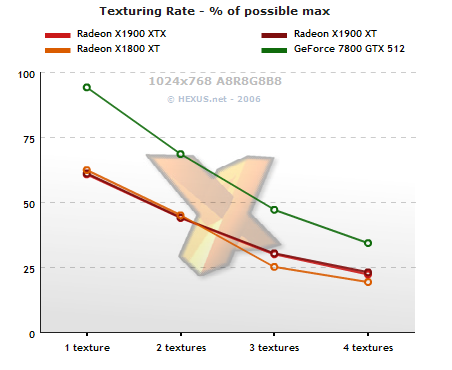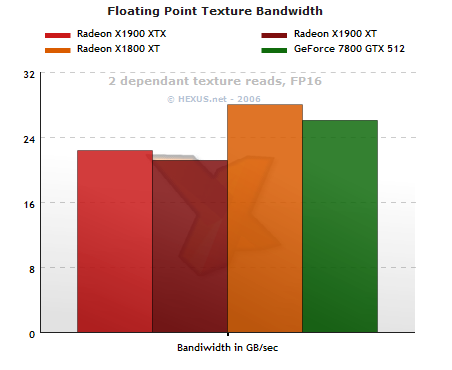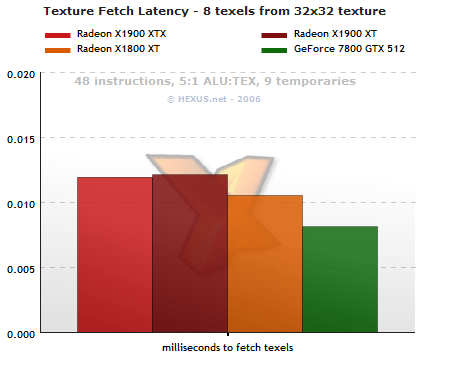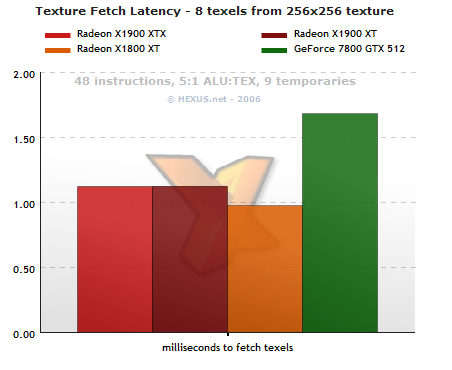Texturing Performance
As in our recent look at X1600 XT and X1300 PRO, we start with texturing performance.Multitexture Fillrate

Multitexturing is bandwidth limited as texture layers increase, hence the large lead for GTX 512. It makes good use of 850MHz memory in this test. Even with the same ROP count, texture units and memory bandwidth as X1800 XT, X1900 XT still exhibits less performance loss, although only to the tune of 3.5%.
Floating Point Texture Bandwidth
We measure available texture bandwidth by asking the hardware to read from sequential locations in an FP16 texture, the second texel sample relying on the first, creating a dependant texture read.
For some reason the hardware can't execute the texture read as fast as R520 and X1800 XT can, despite there being no theoretical reason other than a driver problem or issue scheduling the texture fetch. Software defeats the hardware, likely. We'll come back to that theme later.
Texture Fetch Latency

In our texture fetch test R580 is again slightly slower than R520 with both ATI GPUs when fetching texels from a small texture. The entire texture fits nicely inside the GPU's texture cache on all three tested chips, indicating G70 has a larger texel cache bandwidth than either ATI chip.

When using a texture that - even with compression - wouldn't fit inside the texture cache, ATI's high-end GPUs do better than NVIDIA G70, although R580 is still ever so slightly slower than R520 at the same clocks.









